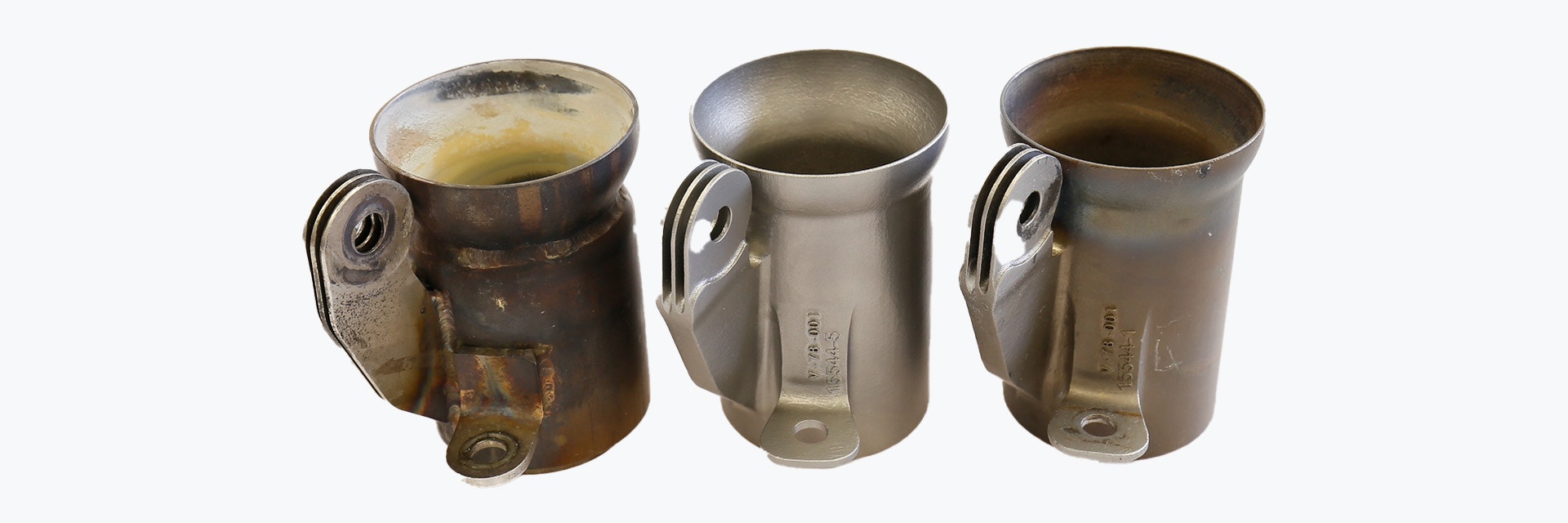CASE STUDY
From 23 Pieces to One: Vocus and Materialise Deliver Aerospace Innovation with Inconel and Additive Manufacturing
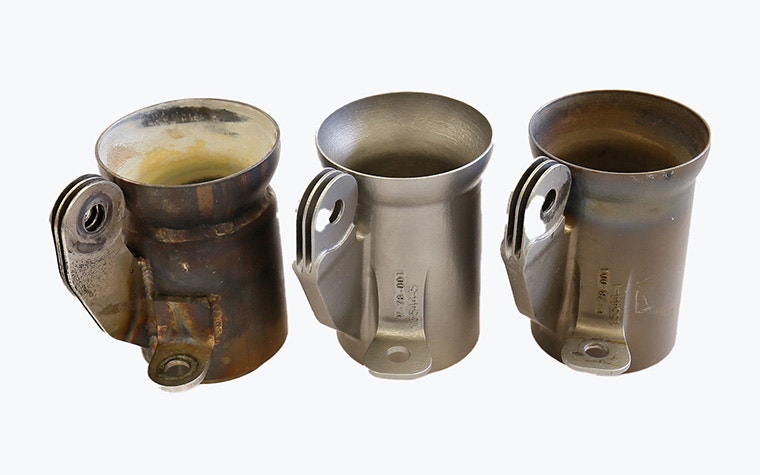
When Vocus partnered with certified POA Materialise to redesign a troublesome coupler for metal 3D printing, it had one clear goal: produce a durable, accurate, and EASA-certified part that could thrive under thermal and dynamic stress. Here’s how a combination of Inconel and 3D printing expertise led to a supplemental life certificate (STC) and a life cycle ten times longer than the original part.
The challenge
Eliminate production fluctuations, speed up lead times, and extend service life
Like many aerospace components, Vocus’ muffler coupler is unique. Designed for two-seated powered gliders such as the Ventus and Arcus M, this sliding part sits between the engine and exhaust system, helping to keep things quiet. Here, it’s exposed to a lot of thermal and dynamic stress — and that’s where the problems started.
The original part, manufactured in pieces with traditional techniques and welded together, simply couldn’t handle the strain. Reliability issues, particularly those related to thermal expansion and sealing, were common. Weak points generated by the production process led to short service life, while the lack of control and consistency caused considerable production fluctuations, long delivery times, and high costs.
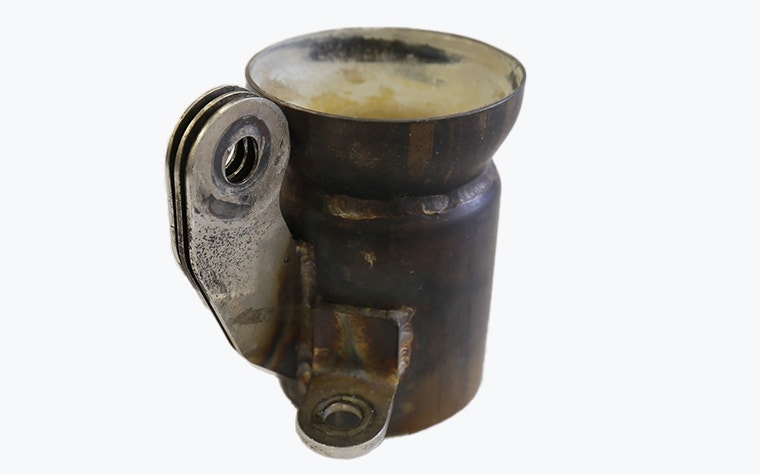

“With conventional manufacturing and welding, it’s very complicated — the part had 23 pieces with different processes, and it’s very difficult to control everything,” explains Stefan Gorkenant, Project Lead at Vocus. “We knew that with additive manufacturing, we could greatly improve precision and traceability throughout the process, from manufacturing to maintenance and replacement. It allows us to produce high-precision, durable components starting from a quantity of one, with clear benefits in performance and cost.”
“This was also their opportunity to design in the components that were previously welded on — Vocus would print their model in a single piece instead of 23 parts, eliminating the weaknesses of the original design. ”
The solution
3D print in a single piece with Inconel for incredible durability, traceability, and lead time
As an additive manufacturing (AM) company, Vocus excels at redesigning parts for 3D printing and encouraging an AM mindset among its clients. They provide polymer parts and support for many companies, including those in aviation. For the coupler, however, they needed a supplier with an EASA 21.G certification and metal 3D printing expertise, turning to certified POA Materialise in early 2020. It was the beginning of a nearly six-year project to produce an industry-first.
Working closely with Materialise and EASA, the Vocus team began by reverse engineering the part. They used a high-resolution 3D CT scanner to capture every detail of the original component, including its complex geometries and internal structures — vital information for the rebuild.
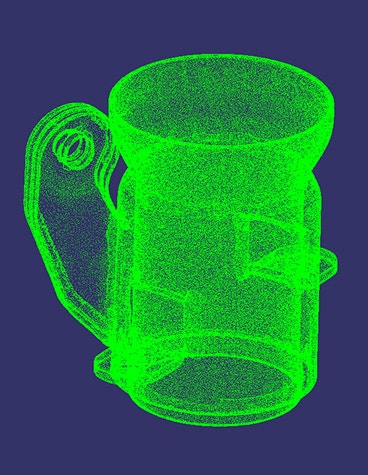
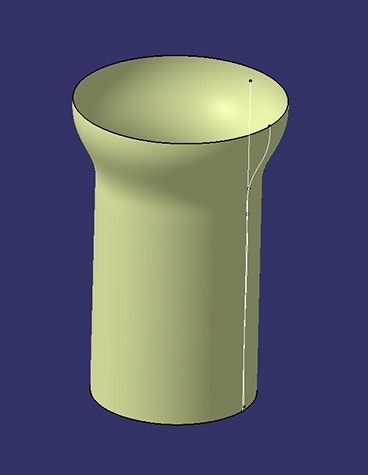
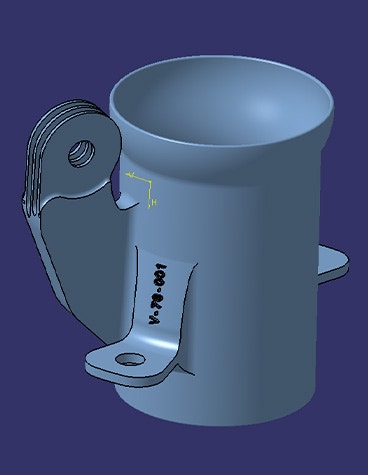
The team used that data to create a precise CAD model. They then began optimizing the design to improve functionality and buildability, such as reducing sharp edges and stiffness jumps. This was also their opportunity to design in the components that were previously welded on — Vocus would print their model in a single piece instead of 23 parts, eliminating the weaknesses of the original design.
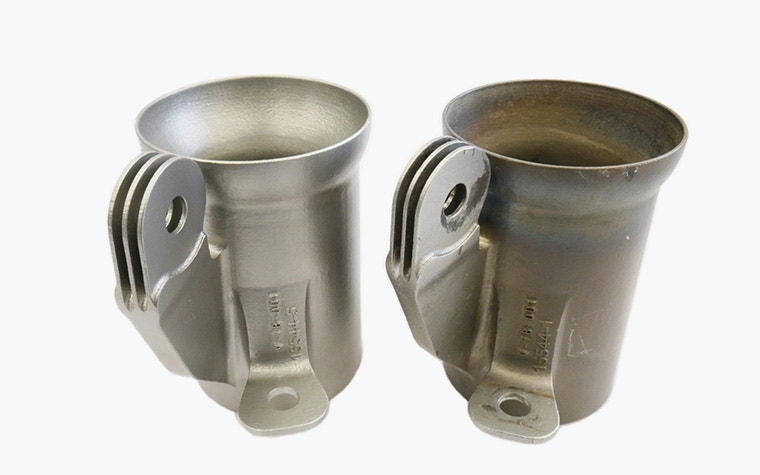

Then came the testing phase. The team first 3D printed a plastic model to ensure conformity, dimensional accuracy, and fit, using those findings to further improve the design. They optimized load radii, reinforced highly stressed areas, removed unnecessary material from less stressed areas to reduce weight, and made topology optimizations to make the most of the additive manufacturing process.
Now, it was ready for the real test: metal 3D printing.
“We printed our first prototypes in stainless steel 316L, but we found that they broke in the same area as the original,” recalls Stefan. “It’s because the engine runs on avgas, which contains a high level of sulfur — sulfur, steel, and water make sulfuric acid, which caused a lot of wear. We decided to change to Inconel because it’s much less reactive.”
Materialise’s certified production process
The production of the Inconel parts took place at Materialise under ISO 9001 and EN 9100 criteria, ensuring the quality and control of the process. This also gave Vocus access to Materialise’s production software: the team carried out the digital preparation for the 3D printing process using a combination of Materialise Magics and the EOS Build Processor. Along the way, all steps were followed to ensure that documentation was seamless from creation to delivery.
With the first batch of six couplers in hand, the team moved on to rigorous load testing, both on the ground and in flight, aiming to validate structural integrity and resilience. The components quickly proved their worth, meeting all required safety and performance standards. All that remained was to seek EASA approval.
“Results suggest its life cycle will be at least ten times longer than the original part, and that number is extending by the day.”
The result
A long-lasting, flight-ready part and EASA STC approval
Needless to say, the new version of the coupler met expectations. Printing in a single piece led to a greatly improved load balance, while Inconel’s inherent characteristics allow it to handle the thermal stress with ease — up to 650° Fahrenheit (343° Celsius) for twenty seconds at a time. Results suggest its life cycle will be at least ten times longer than the original part, and that number is extending by the day.
Unsurprisingly, it swiftly passed EASA’s approval process. Vocus received the STC it needed to produce and provide the coupler to aviation companies and achieved its goal: a certified, flight-ready, category two part produced with metal 3D printing.
“While the process was technically challenging, we knew that it was absolutely feasible,” recalls Stefan. “Thanks to the great collaboration with the Materialise team, we achieved a functional and certifiable solution that is now in successful operational use.”
“It’s hard to imagine this process started in 2020,” he continues. “Materialise supported us very much throughout the entire project. EASA, as well, through the certification process. And now we have succeeded. We have the STC in our hands, and I’m sure that this is a unique process not found anywhere else in the world.”
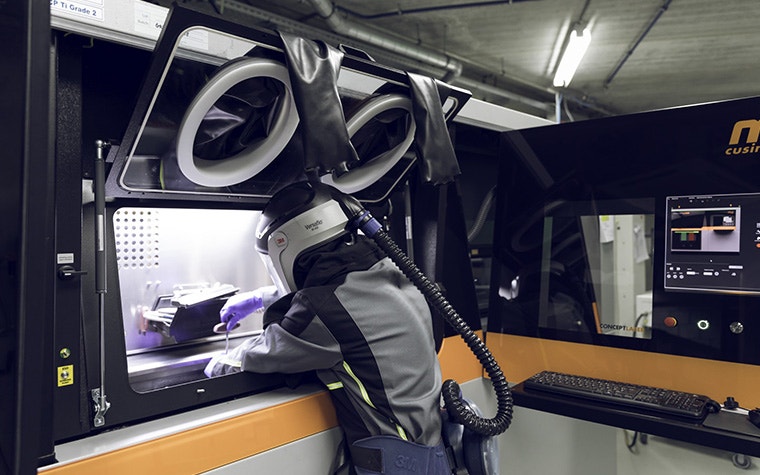

AM’s bright future in aviation
While much of the focus has been on the process, the materials, and the EASA approval that brought it all together, one of the leading reasons for this project’s success came long before Vocus reached out to Materialise: application spotting.
“It’s important to realize that not every part is destined for AM — sometimes traditional methods are more suitable,” Stefan explains. “Our first motivation [for this project] was that we detected a part that we knew was right for AM. We wanted to get in touch with EASA to learn about the process behind certifying a part like this because we’re sure that many more parts could benefit from making this change.”
Nudged to elaborate, Stefan goes on to say that one of the main drivers is quantity. Where an automotive manufacturer may require thousands or millions of parts at a time, that’s rarely the case in aviation.
“With this piece, we need roughly 100 pieces each year — AM is ideal. And there are many parts in aviation where you don’t need more than 1,000 a year, making it a very interesting production method for the industry.”
Share on:
This case study in a few words
Aerospace
- Metal 3D printing
- Inconel
- Materialise Magics
- Materialise Streamics
- Heat and chemical resistance
- Durability
- Accuracy and traceability of parts
- Repeatability of production
- EASA Part 21.G certification
